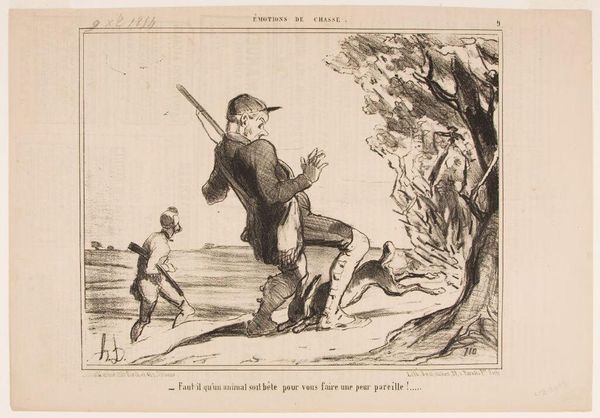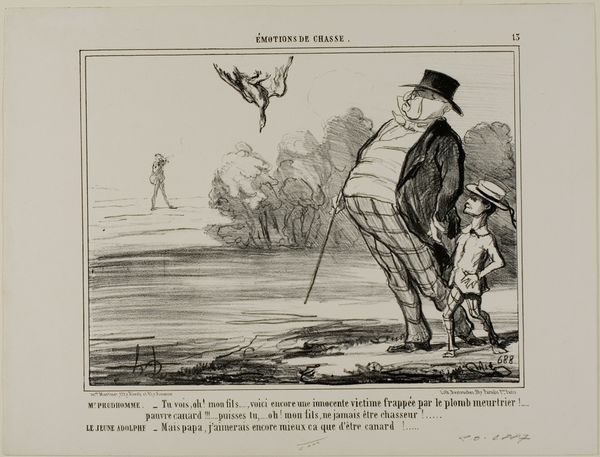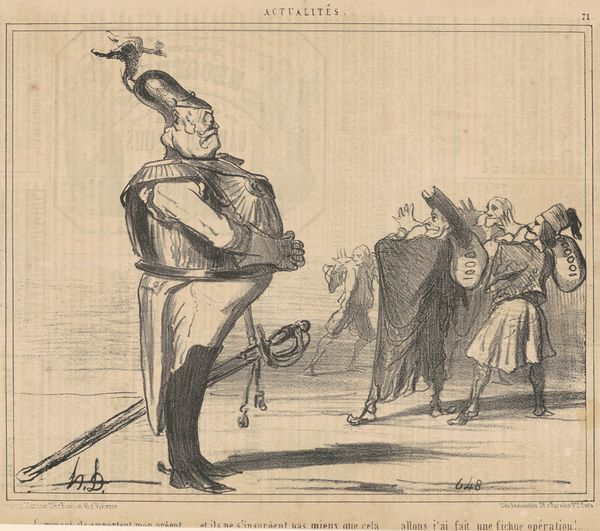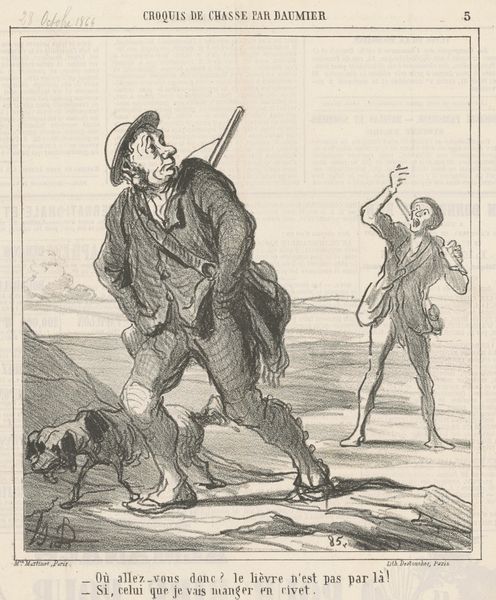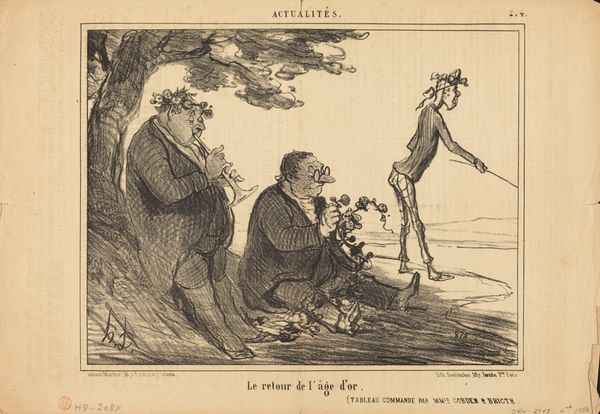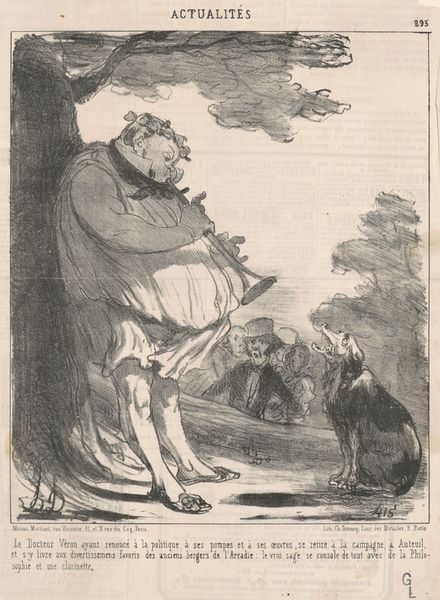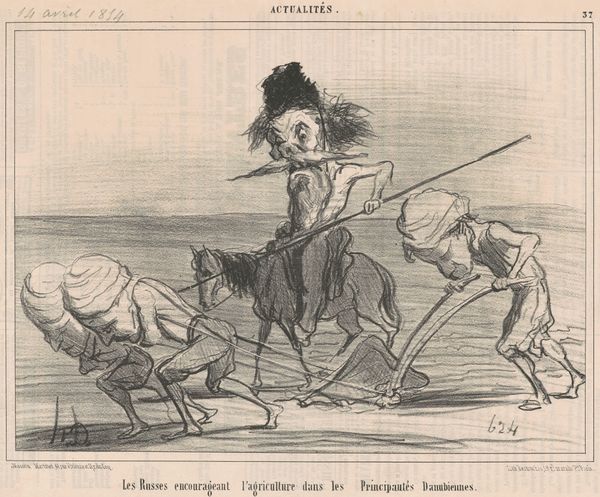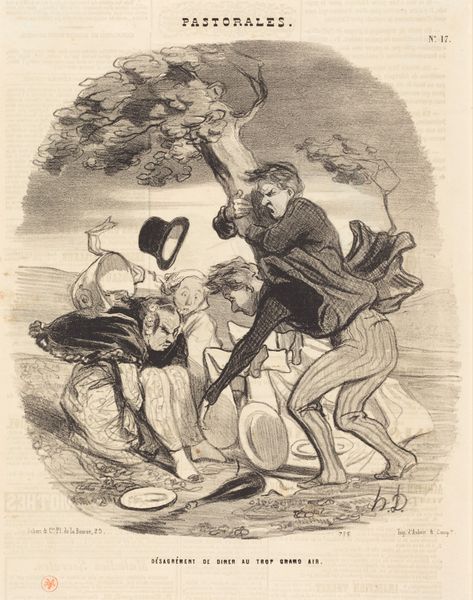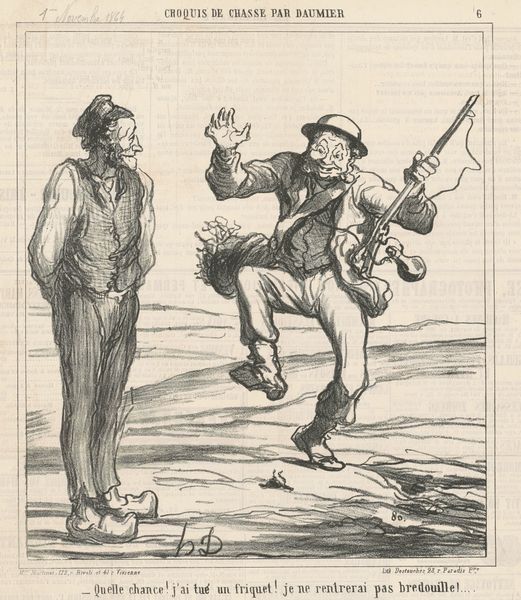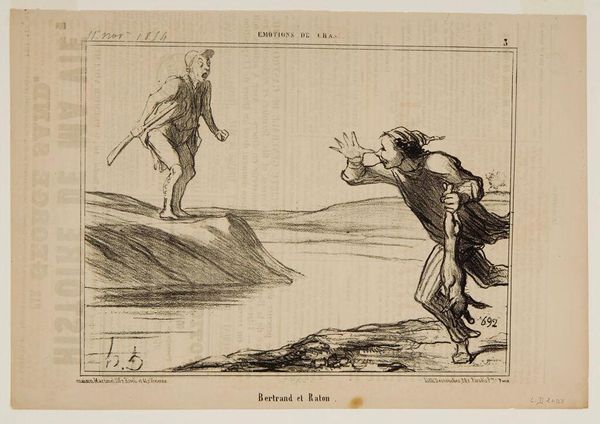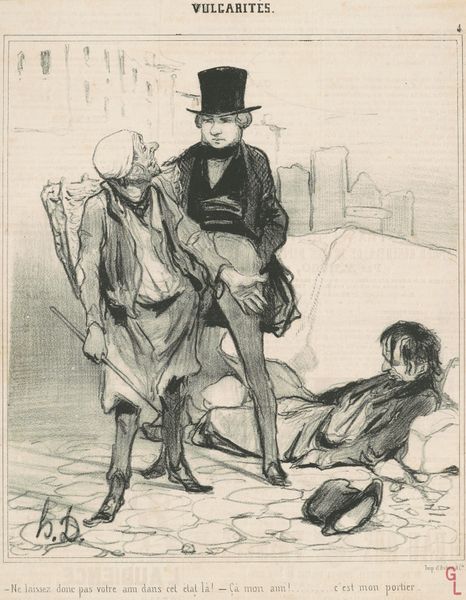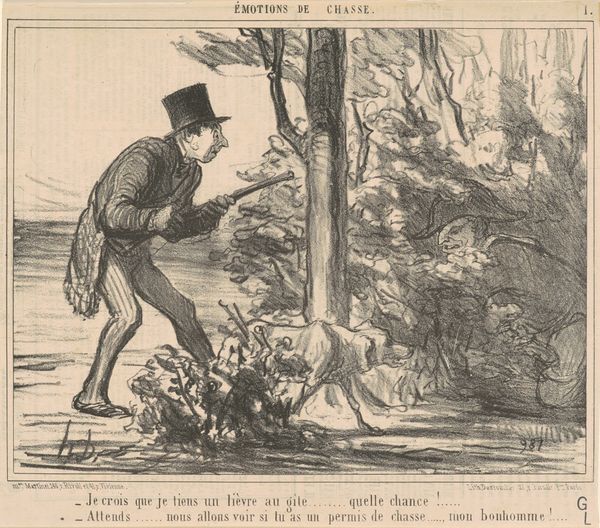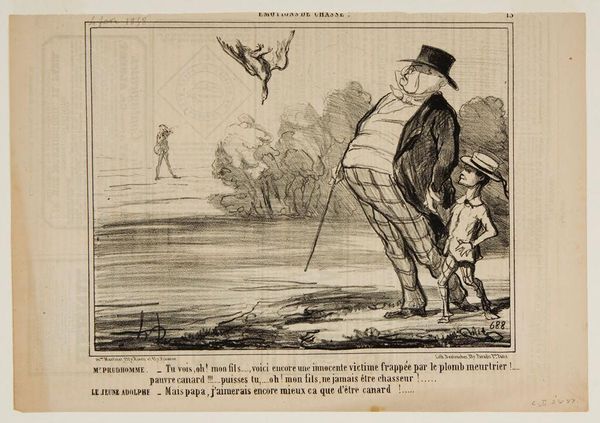
drawing, lithograph, print
#
drawing
#
lithograph
# print
#
caricature
#
romanticism
#
genre-painting
#
history-painting
#
realism
Copyright: National Gallery of Art: CC0 1.0
This lithograph, *Faut-il qu'un animal soit bête*, was made by Honoré Daumier. Lithography is a printmaking process that relies on the mutual repulsion of grease and water. Daumier drew directly onto a lithographic stone with a greasy crayon. The stone was then treated with chemicals, so that ink would adhere only to the drawn areas. When printed, this method yields a characteristically soft, velvety texture, which you can see in the tonal variations throughout the composition. Lithography was a commercial medium, perfectly suited to the mass production of images for newspapers and journals. Daumier made thousands of such prints, and the medium allowed him to quickly capture the follies of French society, with a focus on the middle class. The final prints are testaments to the immediacy and accessibility that lithography offered artists, making it a powerful tool for both artistic expression and social commentary. It's a fascinating blend of craftsmanship and mass production.
Comments
No comments
Be the first to comment and join the conversation on the ultimate creative platform.
